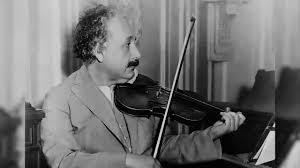How To Boost Your Creativity The Einstein Way-With Combinatory Play
Curated from: blog.trello.com
Ideas, facts & insights covering these topics:
10 ideas
·6.76K reads
18
Explore the World's Best Ideas
Join today and uncover 100+ curated journeys from 50+ topics. Unlock access to our mobile app with extensive features.
Combinatory Play
We’ve all experienced that flash of insight, that fleeting moment when a solution we’ve been grinding away at reveals itself in an unexpected place.
Einstein, for example, was known to play violin whenever he was stuck on a tough problem and often spoke of how music influenced the way he thought about math and science.
343
955 reads
How The Brain Works
The brain’s building blocks are neurons: nerve cells that receive and transmit signals along neural pathways. Certain pathways are forged at birth. Others can be manipulated by learning.
So when you’re stuck in a rut, your brain’s neurons could literally be stuck on a neural pathway you’ve carved out through your behavior. But you can get unstuck by choosing to make new connections.
337
758 reads
Comfort In Familiarity
Your brain is continually striving for predictability, and it can get pretty set in its ways. When a novelty appears, the dorsolateral prefrontal cortex (DLPFC) part of your brain is wired to review old rules and apply them to this new situation. It does not want to invent new ways if it can help it. This can hinder your creativity.
Combinatory play can help with quieting this part of the brain by relaxing your mind.
292
652 reads
Seeking Patterns
While applying old lessons to new situations can limit your creativity, the brain’s inclination for seeking patterns can encourage innovation, too.
This will serve you well in creative thinking as long as you question your assumptions and try to find patterns where there aren't any.
249
617 reads
Cross Train Your Brain
Try a new activity within your field or related to it; you’ll expand your neural connections and strengthen your brain overall.
If you’re a novelist, try your hand at poetry. If you’re a painter, dabble in sculpting. If you’re a computer scientist, play around with web design.
334
719 reads
Do Some Other Mundane Activity
Doing something boring, like showering, doesn’t require substantial cognitive effort, so our brains are free to wander.
And a brain “at rest” isn’t really resting at all. Mind-wandering may allow the conscious to give way to the subconscious, so the brain can connect disparate ideas.
282
574 reads
Sleep On It
If you’re feeling stuck on a problem, try going to bed. You just might have a more creative solution in the morning.
When we’re in REM, our brains are better able to integrate unassociated information, which is essential to creative thinking (and can explain why dreams are so bizarre).
263
509 reads
Indulge Your Inner Copycat
Get inspired by someone else’s creations:
- If you’re suffering from writer’s block, buy a pack of word magnets and rearrange them until you come up with creative phrases on your fridge.
- If you’re building a product and you're stuck in the design phase, search for competitors who have made similar products, find where their customers are unhappy, and design something new that solves the problems your competitors failed to address.
270
518 reads
If You Need A New Way Of Thinking
... use combinatory play to give your brain a boost:
- Participate in creative cross-training to expand your brain’s neural connections.
- Let your mind wander by doing something mundane, like taking a shower.
- Go to bed and let your subconscious mind connect the dots during REM sleep.
- Use another person’s work as a springboard for inspiration and improvement.
335
668 reads
IDEAS CURATED BY
Robert H.'s ideas are part of this journey:
Learn more about personaldevelopment with this collection
How to create a positive work environment
Techniques for cultivating gratitude and mindfulness at work
How to find purpose in your work
Related collections
Similar ideas
Read & Learn
20x Faster
without
deepstash
with
deepstash
with
deepstash
Personalized microlearning
—
100+ Learning Journeys
—
Access to 200,000+ ideas
—
Access to the mobile app
—
Unlimited idea saving
—
—
Unlimited history
—
—
Unlimited listening to ideas
—
—
Downloading & offline access
—
—
Supercharge your mind with one idea per day
Enter your email and spend 1 minute every day to learn something new.
I agree to receive email updates


